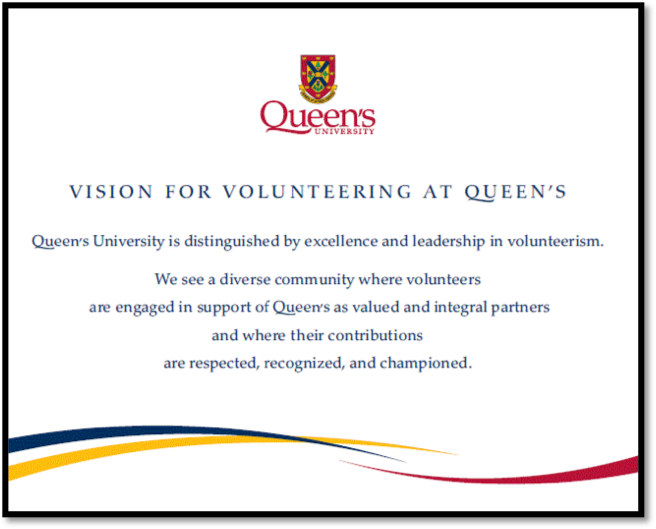
Recently, Volunteer Ottawa spoke with the Queen’s University Alumni Relations & Annual Giving department about their alumni and student volunteer program, which works with close to 2,000 alumni and student volunteers each year, in a wide variety of roles. “Volunteer assignments range from day-of-event roles, to long-term positions on boards or committees, to program-based roles like reunion planning, or alumni branch engagement work around the world,” says Maryanne Wainman, Alumni Officer, Volunteer Relations. “We work with volunteer mentors, fundraisers, speakers, advisors, and countless other volunteers that help to connect alumni with each other, with current students, and with the university.”
“In the greater Queen’s University community, students volunteer in the thousands, whether for Queen’s student government, clubs, Athletics Booster Clubs; or community-based groups like the United Way and the Red Cross. Many Queen’s faculties and schools also engage both alumni and student volunteers in a variety of roles throughout the year.” – Maryanne Wainman, Alumni Officer, Volunteer Relations
Queen’s has engaged volunteers since the 1800s but until recently, it didn’t have a consistent structure or framework for involving volunteers. “As a decentralized institution, we had been hearing feedback that the volunteer experience at Queen’s was inconsistent. Individual volunteers in one area of the university might have a completely different experience than those in another; some groups had formalized plans in place with position descriptions, formal evaluations etc, and others were operating much more informally,” explained Maryanne.
It was with this context in mind that its ‘Volunteer Relations’ team was tasked with thinking about developing a Volunteer Engagement Framework. They needed a way to bring together these seemingly disparate groups to ensure that a Queen’s volunteer – any Queen’s volunteer – had a similar experience that reflected the importance the institution places on volunteer engagement, and excellence in service representative of the Queen’s brand.
When they began their volunteer relations work four years ago, the team focussed primarily on volunteer engagement practices within Alumni Relations & Annual Giving department. “We used a project management approach to determine our current state (what was the experience of volunteering with Queen’s Alumni Relations actually like? What was it like for staff to work with volunteers?), our desired future state(how could the Queen’s Alumni Relations volunteer experience be enhanced? What tools / resources could help to improve this process?), and the gaps in-between that needed to be addressed. It was during this process that we learned about the Canadian Code for Volunteer Involvement and the Audit Tool, and both proved to be invaluable resources and guiding lights along the way,” Maryanne expressed.
After conducting extensive best-practice research, focus groups, and administering surveys to both staff and volunteers in their department, it became clear there were four priority areas for groundwork within the Alumni Relations & Annual Giving department’s volunteer program: Orientation & Training; Information & Data Management; Evaluation & Feedback; and Risk Management.
Next week, in the second part of this blog post, Maryanne explains how the Queen’s University Alumni Relations & Annual Giving department addressed each of its identified priority areas using the Canadian Code for Volunteer Involvement.
